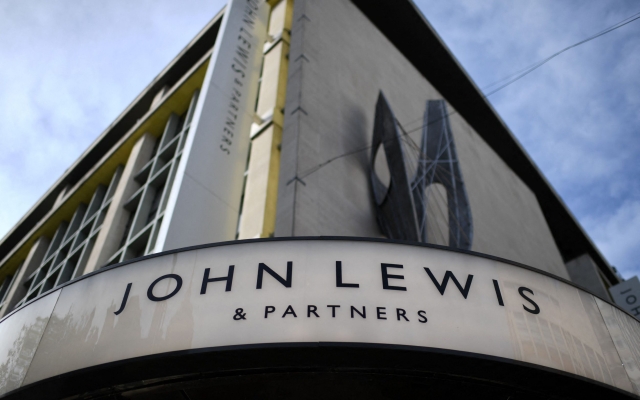
Quality, comfort, a very pleasant way to while away the day; these are the common feelings that arise when thinking about John Lewis, the street stalwart who for much of the 20th century personified a higher class of shopper, shopper and shopkeeper. It was where brides-to-be posted their wedding lists, where mothers-to-be bought a stroller for their baby, and where an entire new home could be outfitted in one fell swoop, from a toaster to a mattress pad.
From a business perspective, it was a remarkable success that started in 1864, but now dark clouds are gathering on the horizon, suggesting that the strategic minds behind the country's favorite department store are in need of a major rethink.
And the turning point? The chairman brought in to save it, Dame Sharon White, has announced she will step down by early 2025, making her the shortest-serving chairman in the partnership's history. Questions have again been raised about the future of the network.
Dame Sharon's tenure has been a busy one, with the retailer suffering heavy losses and staff bonuses being scrapped in two of the last three years.
The former civil servant and Ofcom chief was criticized for her lack of industry experience when appointed to the role in early 2020, and her strategy and leadership have also drawn backlash since then. Her controversial attempt to end employee ownership was ultimately rejected. Since she took the reins, sixteen stores have closed.

So what happened? The views of Telegraph readers are a good litmus test for where Mid Englanders are on their minds: «John Lewis was our favorite store for all our electronics, furniture, kitchen equipment, Christmas gifts etc,» says Margie Forsyth. “Not anymore – not since they closed their shop in Tunbridge Wells. If John Lewis can't make it in a place like Tunbridge Wells there really is no hope!»
A lack of stores is one thing, but the complete lack of customer service that has historically put it head and shoulders above the competition is another: «Their unique selling point of great customer service just doesn't exist anymore,» laments Lynn Johnson of Beaconsfield.
“Recently I wanted to order custom curtains. When I wanted to speak to the store in High Wycombe it was completely impossible. How can you serve customers if [you don’t communicate with your] customers?”
But people tend to write about it in national newspapers because they care; because they mourn his absence; because they want the brand to succeed. In microcosm, this encapsulates both the opportunities and challenges facing John Lewis. On the one hand, its ability in the Internet era to inspire affection and trust. On the other hand is fatigue and a deteriorating customer experience.
So the question is, how can John Lewis be fixed?
 Baroness Helena Morrissey says shopping at John Lewis should be «fun». Photo: Kumar Sriskandan/Alami
Baroness Helena Morrissey says shopping at John Lewis should be «fun». Photo: Kumar Sriskandan/Alami
He survived the streets and the storms that destroyed so many competitors. (Debenhams has only been online since 2021. BHS closed in 2016. House of Fraser, rescued by businessman Mike Ashley in 2018, closed a further eight stores last year, with chief executive Michael Murray saying “department stores around the world are broken. «) But, nevertheless, several years experienced hot years.
This was partly due to difficult market conditions beyond his control, and White appears keen to highlight this. In a video message to employees on Monday morning, she said: «I don't think any of us could believe that in the last four years there has been a two-year global pandemic and a cost of living crisis.»< /p>
But the problems extend further. Insiders say the business was a “mess” when she arrived. Financially, the partnership was failing, with debt of over £2.4 billion and sales falling. In the years that followed, the pressure only intensified, and losses soared as the pandemic hit and inflation rose.
Dame Sharon has focused on cutting costs not only by closing stores but also by cutting jobs at head offices. The partnership has already cut the company's costs by £300 million, with a further £600 million planned to be cut.
“The market is a really challenging place at the moment,” says Dr Geoffrey Bray, associate professor of consumer behavior at Bournemouth University. “It is clear that many consumers have moved even further online during Covid and these trends have continued. When we came out of Covid there were some really serious supply issues, [causing] stocking issues and later a cost of living crisis, so inflation pressures really squeezed John Lewis.»
Many consumers are tightening their belts and, with John Lewis positioned «relatively at the quality and higher price end of the spectrum», they may have been more vulnerable than more budget retailers. The old promise to «never knowingly underprice» is a thing of the past — it was abandoned last year after nearly a century because it couldn't stand up to competition from online sellers such as Amazon. The bland new tagline, «For all of life's moments,» perhaps reflects how the brand has begun to fade.
The affordable Anyday line, introduced in 2021, was an attempt to attract shoppers on a budget. And some believe this is what is needed.
 Ms Sharon's tenure at John Lewis has been a difficult one. Photo: Paul Grover
Ms Sharon's tenure at John Lewis has been a difficult one. Photo: Paul Grover
Andy Barr, personal finance expert and co-founder of money-saving website Alertr, says getting your prices right will be critical. «Ultimately, consumers vote with their feet and unless John Lewis closes the price gap with other big department stores such as Marks and Spencer they will have to continue to struggle,» he says. “Looking at price fluctuation data for John Lewis products over the past two months, which consumers track through Alertr, we see that more than 16 per cent of products have had price increases and just two per cent of products have had their prices reduced. This… isn't the full picture of their pricing strategy, but it certainly doesn't paint a positive picture for potential customers, especially when they are bombarded with messages about discounts and sales from rival stores.»
But Baroness Helena Morrissey, financier and City guru , argues that the key to John Lewis's prosperous future is returning to what made it successful before and «why people liked it».
She says: “They need to reinvent what they do: serving customers, giving people confidence that they have maximum value, and reducing non-core activities… Clearly, redefining what a brand is has critical.”
Among these non-core activities is real estate: John Lewis Partnership (JLP), which also owns Waitrose, plans to build and rent out 10,000 homes on its land, with the aim of taking 40 per cent of the profits from foreign retail trade by 2030.
But Baroness Morrissey believes there is still a place on the high street for a store where we can go in person, find what we want and get great customer service — and that customers are willing to pay for it.
“For the convenience of buying underwear in one department and pans in another, there is still a market for that,” she says. “I would enhance it. Not trying to imitate another organization, but reclaiming that space where people think, “Yeah, John Lewis.”
Shopping there should be “fun,” she suggests.
 John Lewis, a street survivor, has survived the storms that have destroyed so many rivals. Photo: Daniel LIL/AFP
John Lewis, a street survivor, has survived the storms that have destroyed so many rivals. Photo: Daniel LIL/AFP
Dr. Bray agrees. “There is still a market for curated product assortments and great in-store experiences,” he says. “We're still shopping for leisure, so it's really important that [John Lewis] maintains that good experience. They may be tempted to cut back on these investments during tough times, but that would be the worst thing they could do. They need to continue to update the stores and improve the quality of service.”
It is possible that not all existing stores will be able to survive. But, he notes, “this does not take into account the opening of stores in other regions.”
Meanwhile, some argue that the partnership may also have to change its management practices. “I hope that, given that Sharon has appointed a CEO [cost-cutting expert and former Hovis chief executive Nisha Kankiwala, hired in March], they will think about what it means to have a CEO and an executive chairman,” says the former senior JLP activist. “I think it's really cumbersome for business, it just doesn't make sense to me. Besides the fact that it's very expensive, I don't understand how management works when you have an executive chairman and chief executive officer.»
Find the right person who will ensure the survival of the business in a crisis. the future will certainly be «imperative», says Shore Capital analyst Clive Black, who suggests it may make sense to have someone with «significant business acumen and operational experience».
It is clear that John Lewis still enjoys a lot of goodwill among the public — a feeling they may be squandering. Which Midlander can honestly say they haven't been put off by Carrie Johnson's snide complaint that No. 11 Downing Street looks like a «John Lewis nightmare» since Theresa May's departure? Who among them did not take this as a personal attack?
But the company must respond to new circumstances. As Baroness Morrissey says: “A great leader can come and inspire people again.”
Dr. Bray is equally positive in his prognosis. «[John Lewis] has a very clear identity and with careful control of costs it could have a very bright future.»






















































Свежие комментарии